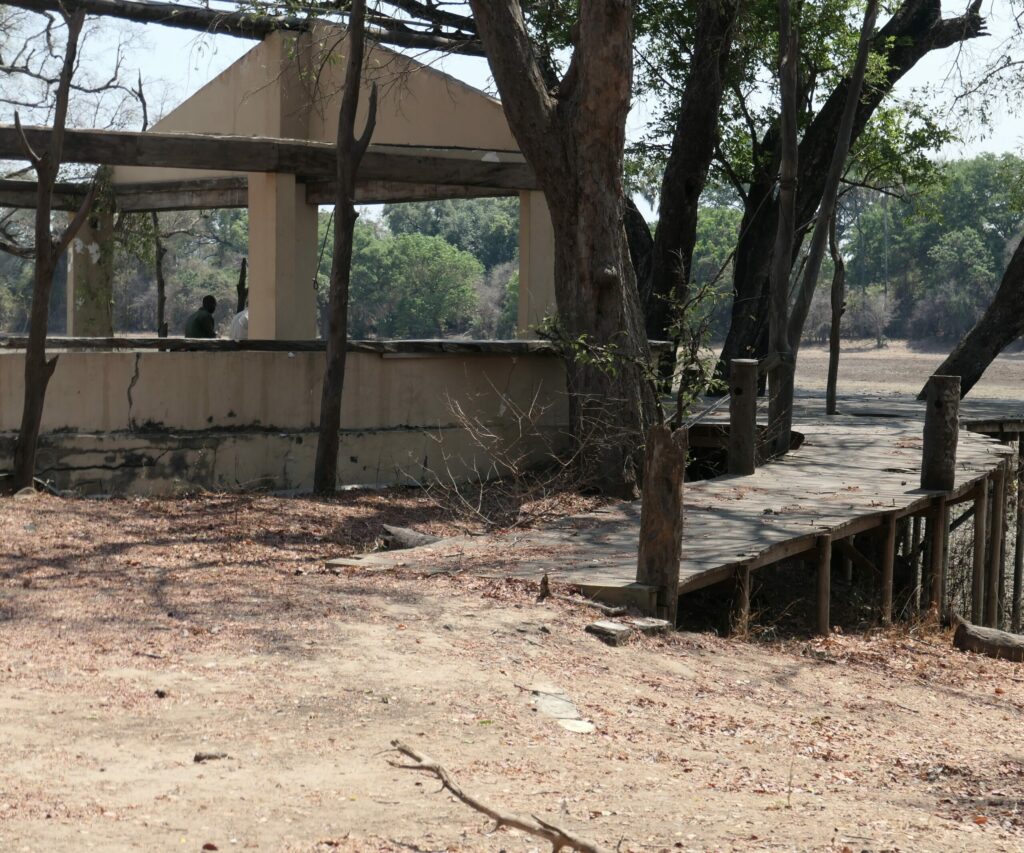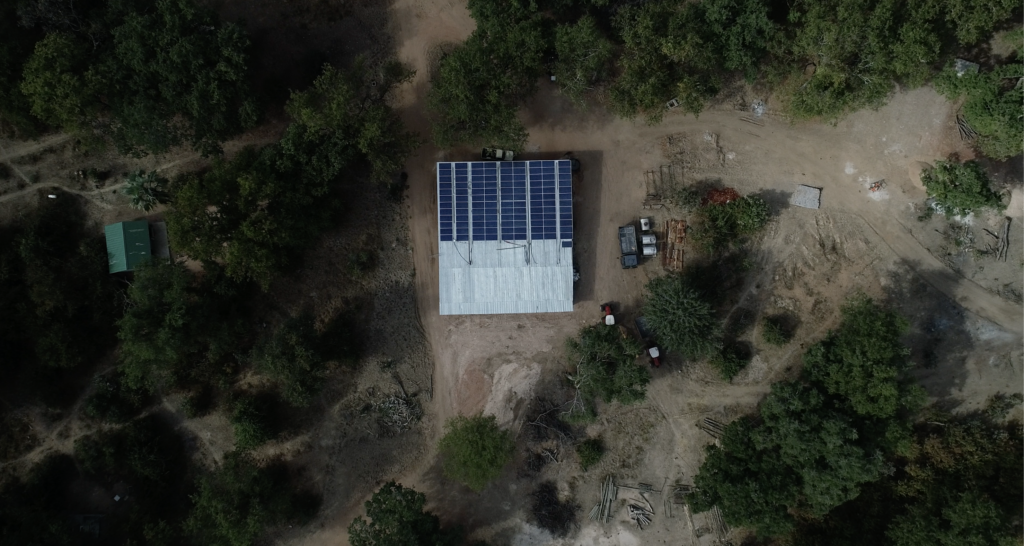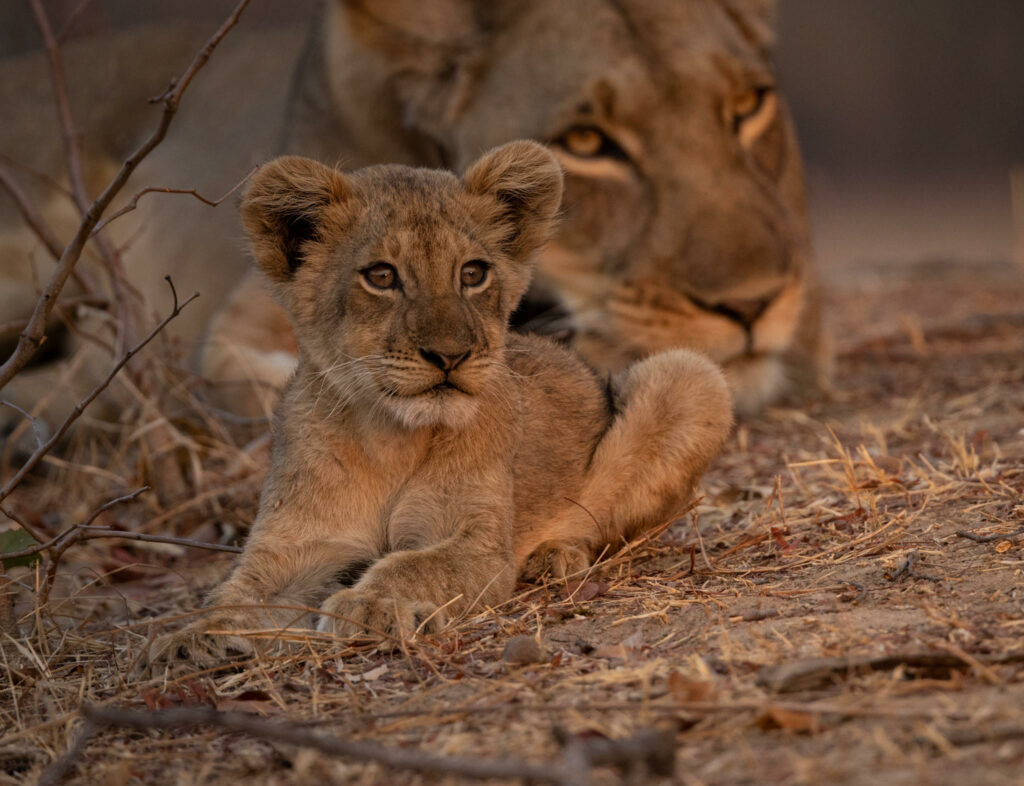South Luangwa is one of Zambia’s most popular parks with highly productive sightings of sought-after species like wild dog, lion and – of course – leopard (it is known as The Valley of the Leopard). But not all areas of the park receive the same number of visitors, with the majority of camps and lodges being near to the Mfuwe Airstrip and the Nsefu sector.
Further down south is a different story. From around 2012, a declining road network and an uptick in poaching made the southern-most reaches of the park harder to visit. The Lusangazi sector is 70km to 90km away from Mfuwe town, making it difficult and expensive to reach by road in those days.
The decline was eventually staunched in about 2019 when the Davy family decided to take over a former site that had fallen into disrepair.

The old site was is a state of disrepair and collapse.
Build It and the Animals will Come
The first step was to get the road network graded so that supplies could come in from Mfuwe. A benefit of this is that the area also became easier for the Department of National Parks and Wildlife, Conservation South Luangwa and the Zambian Carnivore Programme to move around, which presumably made poachers a little more hesitant to be in the area.
The second step was to assess what from the old site could be reused or recycled, and employ artisans and works from the surrounding villages of Malama, Chilikati, Malanga and Nyamluluma, some of whom had never had a formal job before. Gainful employment is a proven step in reducing poaching and wildlife trafficking.
The third step was the installation of a solar plant. In addition, firebreaks were created, tsetse fly control and DNPW scouts deployed to access the wildlife situation.
Although skittish and dispersed at first, gradually the animals started getting used to humans and vehicles. The building of an airstrip also helped with logistics to and from Mfuwe.

The installation of a solar plant helped both construction and conservation teams.
Two Lodges Later – and the Lions are Back
A few years and a lot of hard work later, Sungani and Kulandila lodges are up and running. Thanks to projects around human-wildlife conflict mitigation, the deployment of an anti-poaching unit with K9 patrols, veterinary work and aerial surveillance, guests and guides are now spotting everything from lions slowly reclaiming their territory on Fiya Plain to shy roan antelope and on-the-go honey badgers. Large herds of elephant, buffalo and giraffe retuned to the area along with large groups of plains game, birds and the once-elusive leopards.
More community support and engagement come from securing produce and honey from Mayana Farms and Chikowa Honey, and around 45 staff are employed from surrounding villages (statistically, every employed person in Africa supports five to 10 other people, creating a true ripple effect and a genuine trickle-down economy).

Prides are regaining their territories and starting to expand.
Sustainable Tourism can Work
The success of Sungani and Kulandila – along with support from the DNPW, ZCP and Conservation South Luangwa – shows that once marginal areas can thrive with careful planning and by involving residents. All of this had an undoubtedly positive impact on the wildlife, the very reason for South Luangwa’s formation and existence.

Leave A Comment